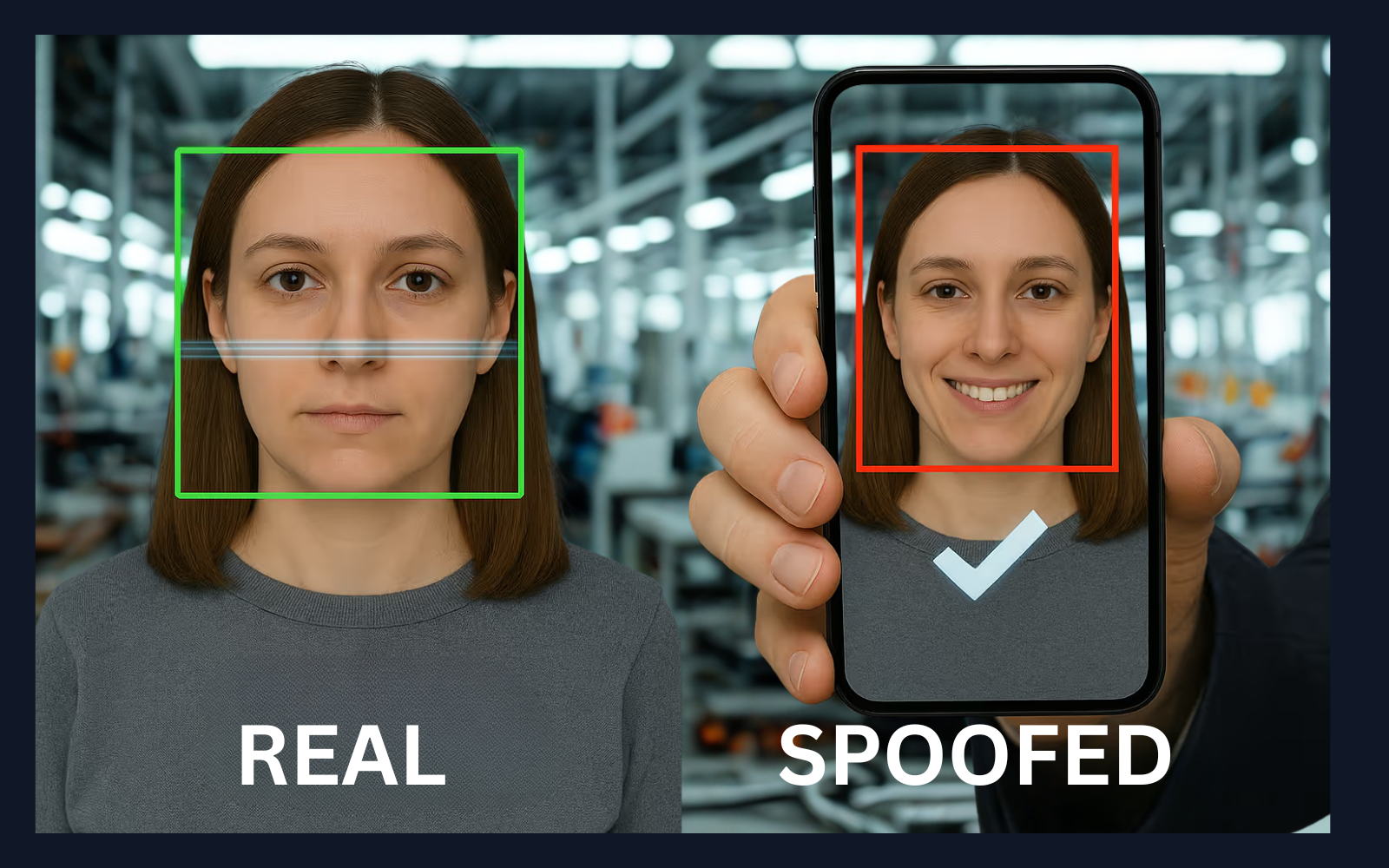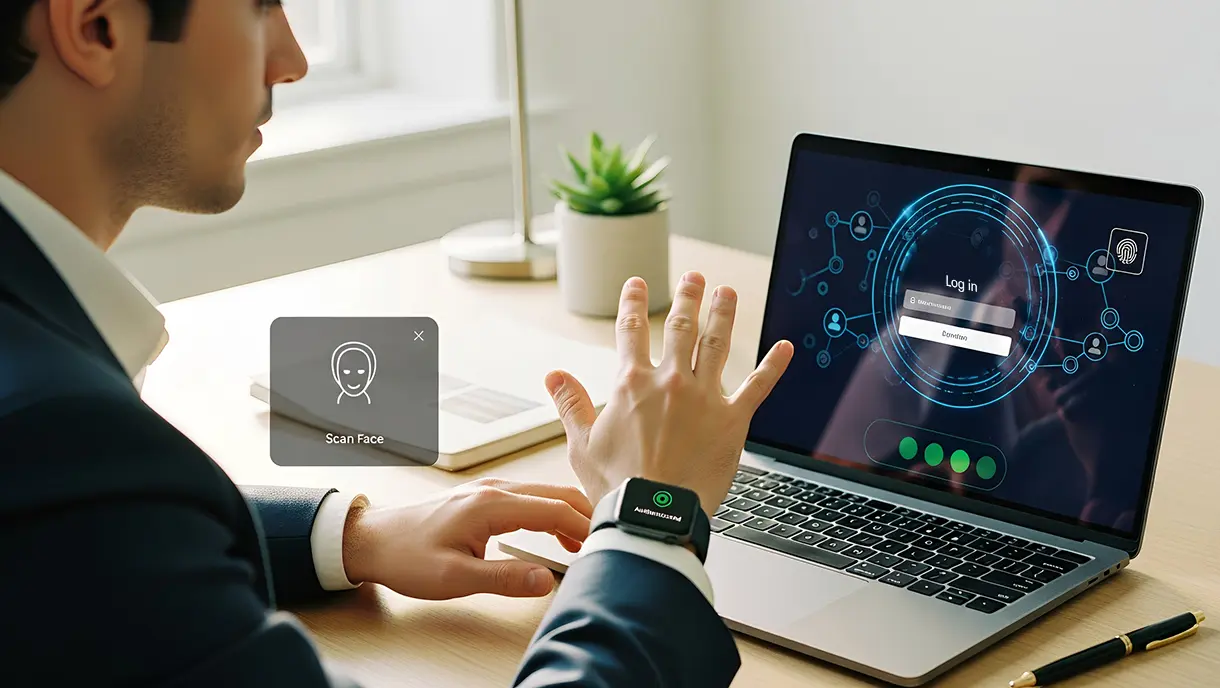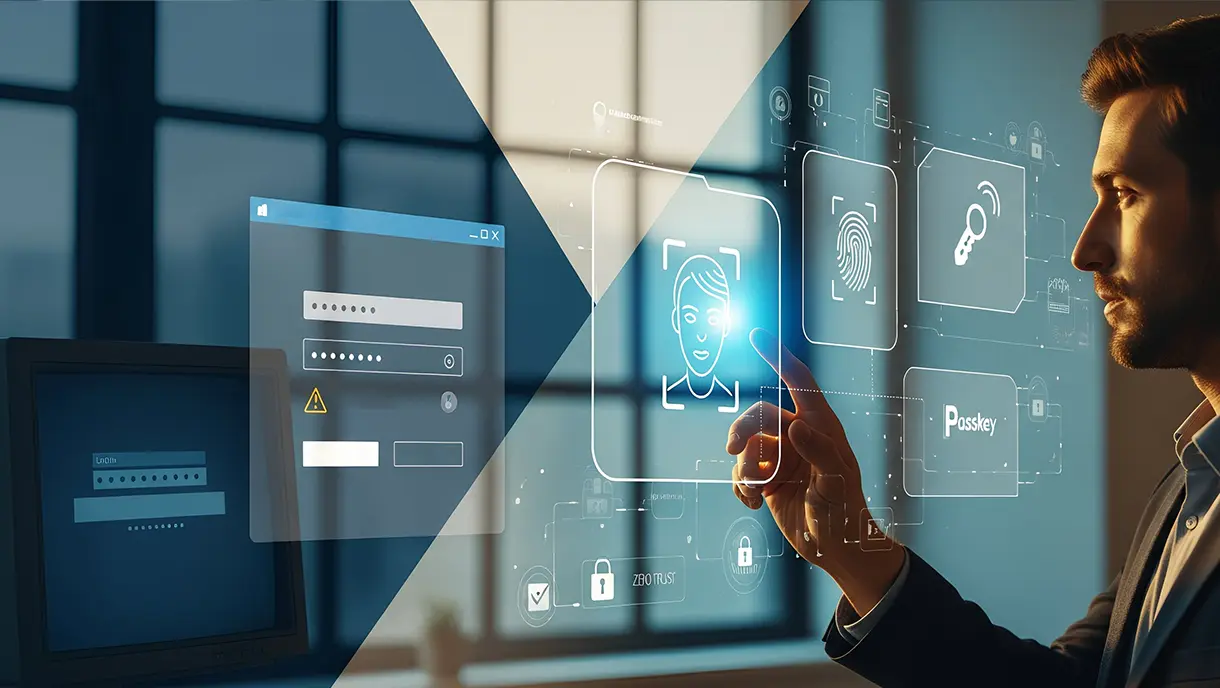Liveness Detection Guide: Protecting Digital Identity 2026
Learn how liveness detection is revolutionizing digital identity verification in 2026. Discover the technology behind preventing spoofing attacks like deepfakes, photos, and masks. Understand its role in securing transactions, improving compliance, and enhancing security across industries such as finance, healthcare, and manufacturing.

In 2026, digital identity serves as the gateway to everything from banking and healthcare to government services and employment. As facial recognition becomes a dominant method of biometric authentication, verifying that the person behind the screen is physically present, and not a spoof, has never been more critical.
Liveness detection is the technology that confirms a biometric input is from a live person, not a photo, video, deepfake, or mask. As AI-powered threats escalate, facial recognition alone is no longer sufficient. Without liveness detection, identity systems become highly vulnerable to spoofing and impersonation.
This is no longer theoretical. Juniper Research forecasts that by 2025, over 1.2 billion mobile devices will be secured by facial recognition paired with liveness detection. Gartner projects that more than 80% of organizations handling sensitive data will adopt biometric authentication, underscoring the urgent need for tamper-resistant technologies.
Liveness detection has moved from a “nice to have” to a foundational component of secure identity systems in a world where digital access defines opportunity.
What is Liveness Detection?
Liveness detection is a biometric security measure that determines whether a biometric sample (e.g., a face or fingerprint) is being captured from a physically present person rather than a spoof artifact. It plays a central role in preventing presentation attacks and in delivering trusted identity verification.
A Concept Rooted in AI Security
Inspired by the Turing Test, which asks whether machines can mimic human behavior, liveness detection inverts the challenge: Can systems confirm that the input is from a real human? This reversal is vital in the digital identity landscape of 2026.
Types of Liveness Detection
- Passive Liveness Detection: Works silently in the background by analyzing micro-movements, lighting, and skin texture. OLOID’s passive liveness is ISO 30107-compliant and achieves 98.6% accuracy using standard 2D cameras.
- Active Liveness Detection: Requires user interaction (e.g., blinking, smiling) to verify presence. Proven to reduce fraud by up to 91%, especially against deepfakes (Sumsub Report).
- Hybrid Detection: Combines passive and active methods for enterprise-grade security. OLOID achieves up to 99.2% spoof detection accuracy in production deployments.
How Liveness Detection Works: The Technology Stack
- Neural Networks and Deep Learning: Trained on millions of real and spoofed samples to detect inconsistencies.
- Texture and Light Analysis: Real skin reflects light uniquely and has depth variation; fakes do not.
- Depth Sensing: 3D mapping through LiDAR or structured light sensors when supported.
- Thermal Imaging: Validates body heat; masks and photos lack thermal signatures.
- Involuntary Movement Analysis: Detects subtle behaviors like blinking and pupil response.
- Challenge-Response Prompts: Thwarts replay and automated attacks with randomized actions.
Why Liveness Detection Matters in 2026
The surge in deepfakes and synthetic identity fraud - up by 900% since 2022 - demands proactive defenses. Liveness detection plays a critical role in safeguarding:
- Financial Transactions and Mobile Banking: Adopted by over 70% of digital-first banks.
- Remote Workforce Onboarding: Identity fraud rose 35% with the shift to remote work.
- Government Access and e-Voting: Enables secure, scalable digital service delivery.
- Online Exam Proctoring: Over 1 million impersonation attempts blocked in 2023.
Real-World Results: Industry Benchmarks
- Gig Platforms: Uber and DoorDash achieved 67% fewer impersonation attempts, helping safeguard drivers and customers.
- Retail & Healthcare: Combined biometric + liveness systems improved login reliability and reduced time tracking errors by 40%, particularly in multi-shift workplaces.
Retail & Manufacturing: Enforcing Shifts with Precision
In retail and manufacturing environments, workforce integrity hinges on accurate time tracking and real-time identity verification. Traditional clock-in methods - PINs, swipe cards, or shared logins - are easily manipulated. Liveness detection addresses this directly by ensuring that only the rightful, present employee can authenticate.
Key Benefits:
- Eliminates "Buddy Punching": Liveness checks stop co-workers from clocking in for absent colleagues.
- Real-Time Shift Visibility: Continuous liveness confirms presence throughout shifts—not just at entry points.
- Audit Trails for Compliance: Biometric logs support labor audits, wage compliance, and union transparency.
- Faster Clock-Ins: Face-based systems enable sub-2-second logins, minimizing shift-start delays.
Result: Companies report up to 60% improvement in timecard accuracy and 20% drop in payroll disputes. Supervisors gain centralized dashboards for real-time monitoring, and anomalies like repeated failed attempts or partial logins can trigger alerts. For high-turnover sectors, this improves both compliance and productivity.
Common Attacks—and How Liveness Detection Defeats Them

OLOID: Securing the Frontline Workforce
OLOID is redefining how identity is managed for the world’s 2.7 billion deskless workers. By embedding advanced liveness detection into its identity access platform, OLOID empowers organizations to eliminate fraud, increase efficiency, and maintain compliance—even in rugged, offline environments.
Standout Features:
- Continuous Liveness Monitoring: Detects presence beyond clock-in, reducing tailgating and shift fraud; ideal for high-security or compliance-sensitive zones.
- Passwordless Access: Fuses facial recognition with RFID badge taps, removing friction and shared credentials.
- Offline Functionality: Works seamlessly in no-network zones like warehouses, industrial yards, and data-restricted healthcare facilities.
Impact Highlights:
- Manufacturing: Slashed unauthorized access by 82% in 60 days through perimeter and interior checks.
- Retail: Achieved 50% faster employee clock-ins, with zero credential-sharing incidents across 1,000+ outlets.
- Healthcare: Ensured HIPAA-compliant sign-ins, while reducing patient-ID mismatches by 35% in large systems.
Ethical and Accessibility Considerations
- Bias Testing: Systems undergo rigorous evaluation to ensure consistent accuracy across age, race, skin tone, and gender.
- Data Privacy: All biometric templates are either encrypted at rest or stored on-device to meet GDPR/CCPA obligations.
- User Transparency: Interfaces are designed with opt-in disclosures, and usage logs ensure consent-driven operation.
Implementation Best Practices
- Risk-Based Flows: Use passive checks for low-risk access, escalate to active when anomalies or sensitive actions arise.
- Compliance First: Choose vendors with ISO/IEC 30107-3 and iBeta Level 1/2 certifications to meet audit and legal standards.
- Continuous Evaluation: Update models and challenge-response flows to counter evolving spoofing techniques.
- Optimize for UX: Ensure end-to-end verification completes in under 5 seconds for broad employee adoption.
- Layered Security: Combine liveness with device recognition, OTPs, or badges for defense-in-depth.
What’s Next: 2025–2030 Trends
- Biometric Fusion: Multi-modal systems (face, voice, iris) will become mainstream for high-stakes access.
- Edge-Based Processing: Liveness detection will increasingly occur on-device to improve speed and limit data exposure.
- Federated Learning: Model improvement without moving data will bolster privacy, especially in healthcare and finance.
- Behavioral Biometrics: Keystroke patterns, gait analysis, and swipe behavior will provide continuous authentication in the background.
Conclusion
Liveness detection is no longer optional. As the line between real and fake blurs, organizations must embrace liveness as the foundation of digital trust. OLOID’s innovations are already helping frontline-heavy industries lead the way in secure, passwordless, real-time identity verification.
FAQs
1. Why is facial liveness detection critical in remote environments?
Facial liveness detection ensures that identity verification processes—especially during remote onboarding or access—cannot be bypassed using static images or pre-recorded videos, which are common in digital fraud attempts.
2. What’s the difference between liveness verification and face recognition?
Face recognition matches your face against stored data; liveness verification ensures the face is live and not a spoof. Without liveness, face recognition alone is susceptible to fraud.
3. How does a liveness check improve workforce compliance?
A liveness check prevents time fraud like “buddy punching” and ensures real-time presence verification, which is vital for compliance audits and workforce management.
4. How does liveness detection work in offline or no-network environments?
Advanced solutions like OLOID use edge processing and on-device AI to perform liveness checks locally, ensuring secure identity verification even in network-restricted settings like warehouses or healthcare sites.
5. Can facial liveness detection be fooled by deepfakes?
A: Advanced liveness systems are specifically trained to detect deepfake patterns—like unnatural blinking, lighting inconsistencies, or expression mismatches—making them highly resistant to AI-generated spoofs.
6. What industries benefit most from liveness verification?
High-impact industries such as finance, healthcare, retail, government, and logistics benefit most—anywhere secure identity verification is essential for operations and trust.
7. What is the role of passive liveness detection in user experience?
Passive liveness detection runs silently in the background, requiring no interaction from the user, thereby enhancing the user experience while maintaining security.
8. How does liveness detection contribute to zero-trust security frameworks?
Liveness detection adds a strong identity layer to zero-trust security environments by ensuring each authentication attempt is legitimate and originating from a present, live individual.
Get the latest updates! Subscribe now!








